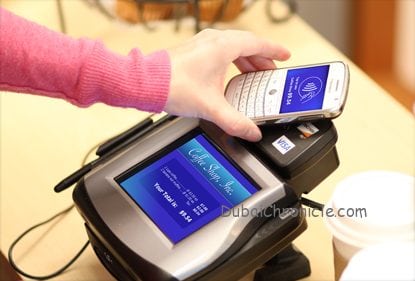
The mobile payments market is developing faster than expected. In 2014 alone, it witnessed a growth of $50 billion. What is more, it is predicted that mobile payments will hit $142 billion in less than four years.
Technology companies have obviously researched the potential of mobile payments, since they compete for a larger market share. Last year, Apple announced its Apple Pay mobile payment service. This week, both Samsung and Google introduced similar platforms called Samsung Pay and Android Pay. Given that the mobile payment market is still in its early stages, it seems hard to predict which service will become consumers favorite.
Samsung Pay
Samsung Pay relies on two types of technology – near-field communication (NFC) and magnetic secure transmission (MST). Most mobile payment platforms, including Apple Pay, support NFC. This technology allows mobile payments to be made through special tap-and-pay terminals. The fact that Samsung Pay also supports MST gives it an upper hand. That is because this technology is compatible with magstripe readers, which are still used by many retailers. On the other hand, U.S. retailers will soon be forced to update their old readers, which will not require the use of MST-friendly services like Samsung Pay.
Still, even if Samsung Pay fails to impress U.S. consumers with its magnetic secure transmission technology, it has another opportunity. Samsung mobile payment platform will support more payment cards compared to Apple Pay. At its launch, Samsung Pay will be able to work with Visa, Mastercard, Bank of America, U.S. Bank. Chase and Citi. In addition to that, the service will be compatible with private-label credit cards, like LensCrafters and Pep Boys.
Also, unlike Apple Pay which is still available only in the U.S., Samsung Pay will be launched in the U.S. and South Korea, as well as China and Europe a few months later.
Biggest advantage – Magnetic transmission technology
Apple Pay
At first sight Apple Pay may seem to have no vantage point over Samsung’s mobile payment platform. As a start, it still limited to the U.S. market and it supports only NFC technology. Also, it is compatible only with iOS gadgets, like iPhones, iPads and the upcoming Apple Watch. The truth, however, is that Apple Pay has one huge advantage over all of its new competitors – its early debut.
Apple announced Apple Pay in September and released it in October. Since then, the service’s consumer base and banks support has been constantly increasing. Currently, the platform is used by 750 credit unions and banks across the U.S. Also, Apple Pay already hold a 1% share on the digital payments market, according to ITG Research. That may not sound like much, but no other similar platform has achieved that in the past.
Another characteristic about Apple Pay that can potentially attract many consumers is that is very easy to operate it. Users do not need to open additional application or even to unlock their device. To activate the service, consumers only need to hold their finger on the iPhone’s Touch ID sensor.
Developers and retailers can also benefit from Apple Pay. That is due to the fact that the platform can be integrated into iOS shopping apps.
The market span of Apple’s mobile payment service will increase towards the end of 2015. This is when the technology company plans to launch Apple Pay in Europe and China.
Biggest advantage – Head start
Android Pay and Google Wallet
During this week’s Mobile World Congress in Barcelona, Google announce Android Pay. Unlike, Samsung Pay and Apple Pay, Android Pay will not target consumers directly, simply because it will not function as an app. Instead, it will be aimed at developers, since it will be launched as an application program interface (API). Simply said, Google’s platform will help developers to add a payment service to their apps, something that Apple Pay also offers. Again, similar to Apple Pay, Android Pay will rely on NFC technology and it support biometric devices, like fingerprint sensors.
The company’s mobile payment service Google Wallet will continue to be a separate service from Android Pay, still it will rely on the new platform. Given that Google Wallet is currently witnessing a revival, Google’s mobile payment API might enjoy a strong debut. What is more, Android Pay will be preinstalled on all smartphones offered by carriers like T-Mobile, AT&T and Verizon Wireless. Also, the program will be supported by MasterCard, American Express and Visa at launch.
But would the release of Samsung Pay and Android Pay make the Android mobile payment market overcrowded? According to Google, it will not. The company shared that it will discuss with Samsung different ways in which the two services can be linked or at least to coexist.
Biggest advantage – Wider scale of devices
Each of these three mobile payment solutions has advantage over the others. However, Apple Pay’s early start, easy use and ability to be integrated to other apps seem to be enough to maintain its leading position. Still, if Samsung and Google join their forces instead of crossing their swords, they would be able to easily compete against Apple’s platform.




































